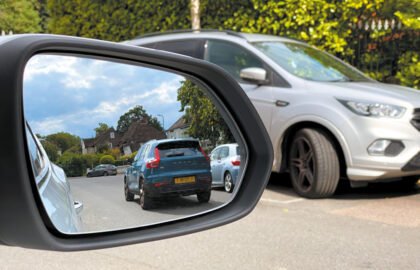Russell Kenny and Paul Hayes have devised a series of self-guided history walks around the Wanstead area, which can be followed on a phone or from a printable map. In the first of a series of articles championing these tours through time, we discover some local historical highlights
History isn’t confined to museums or National Trust properties. As a lockdown project, we compiled a series of walks to encourage friends and neighbours to discover the history on their doorstep. Future articles in this series will outline each of the walks, but in this first instalment, we focus on snapshots of that history, starting in the ‘dark ages’ and working through to the 20th century.
Walking north along the insignificant-looking River Roding, we retrace the steps of a group of Anglo Saxon settlers known as The Hroðingas, who sometime in the sixth century began a journey up the river whose name derives from theirs. They went up into Essex to settle the area of land around the villages now also called The Rodings.
Wanstead Flats was cleared of woodland on the orders of the Abbot of Stratford in the 12th century, to provide grazing for sheep. Many of the great religious houses farmed huge flocks over vast acreages. The wool sustained a large domestic weaving industry, and supplied a very profitable export market in Europe.
Henry VII, founder of the Tudor dynasty, acquired Wanstead Hall in 1499 as a hunting lodge. Henry VIII also hunted there, as did members of Elizabeth I’s court.
Sir Josiah Child became governor of the East India Company, which had a monopoly of trade with India and China, generating vast wealth for individuals and capital to finance the Industrial Revolution. Child bought the Tudor Wanstead Hall and Manor, and transformed the parkland. Later, his son Richard replaced the Hall with a new, grand Palladian style Wanstead House. Completed in 1722, it was hailed as the ‘English Versailles’.
Wanstead House was inherited by a young Catherine Tylney-Long in 1805, but was held in trust for her until she was 21. Meanwhile, the French Prince de Conde, cousin of the guillotined Louis XVI, rented Wanstead House whilst exiled during the Napoleonic period. Louis XVIII, who regained the throne after Waterloo, was a frequent visitor, in 1808 joining the Prince of Wales to review British troops on Wanstead Flats.
Perhaps surprisingly, the railway through Manor Park is one of the oldest in the world, opening in 1839, only two years after Euston became London’s first mainline station.
Wanstead also played its part in World War Two. Aircraft production was carried out in the tunnels of the Central Line. Anti-aircraft guns and barrage balloons were deployed on the Flats, which also housed German and Italian prisoner of war camps. Bombed-out families were rehoused in prefabs near the Golden Fleece pub, and allotments were established as part of the government’s ‘Dig for Victory’ campaign.
We hope this brief taste of the continuing presence of history in our everyday world has whetted your appetite to read future instalments, or better still, to access the walks themselves and get walking while learning about the history around us.





